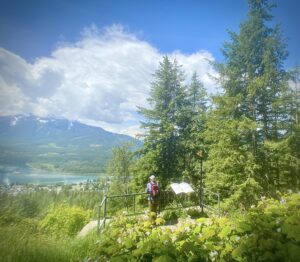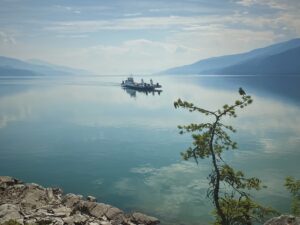

Learning Objectives
Upon completing the reading and reflection on this blog page, readers would:
- Gain insight into the two main conflict resolution methods, specifically ONM and ODR;
- Become acquainted with online and psychological approaches, along with various digital resources;
- Cultivate an awareness of the gaps that hinder narratives characterised by conflict; and,
- Enhance their understanding of intricate and adversarial settings, as well as strategies for initiating conflict management.
Topics Covered
This blog post explores:
- The possible benefits of online narrative mediation (ONM);
- Flexible online methodologies;
- Conflict mapping;
- The connections that unite;
- Holes in conflict-laden narratives;
- ONM and inclusivity;
- Interconnected viewpoints grounded in positive and reality-oriented psychology;
- Reassessing conflict-laden narratives;
- The potential obstacles of ONM;
- An overview of online dispute resolution (ODR);
- The role of digital tools in ODR;
- The benefits of ODR;
- The challenges associated with ODR;
- Integrating written and visual components; and,
- Realising the potential of ONM and ODR.
We provide an outline of the aspects connected to Online Narrative Mediation (ONM) and Online Dispute Resolution (ODR). Also, we \ present the idea of Online Narrative Mediation as a possible method to heal conflicts.
From Conflict to Management. ONM – the Potential Advantages
This is a subgroup of mediation that takes place through digital platforms. Also, the main focus is on disputants’ narratives or stories. Basically, this subgroup revolves around a narrative tradition aimed at understanding disputants’ needs, situations, and realities. Furthermore, disputants through online narrative mediation, are encouraged to create and articulate their own stories. Chiefly, disputants by identifying conflicts and changing patterns, can work through latent issues and tensions.
From Conflict to Management. Adaptable Online Processes
Disputants’ narratives may reveal themes with intergenerational implications. Furthermore, their perceptions of conflict could be positively reframed or restructured. Although you may mentally envision yourself as being a conduit for world peace, merely imagining this outcome does not guarantee its realisation. It is important to dream and to be grounded in the planet around you.
Disputants, over time, may develop a shared understanding and empathy, leading to collaborative thoughts, emotions, and actions. Moreover, disputants from different locations and with busy schedules can take part in ONM. Chiefly, online processes could bring about adaptability and accessibility.

From Conflict to Management. Mapping Conflicts
ONM may be able to handle conflict in some situations. Generally, this can make it less likely that lawsuits, which may be costly but important, will happen (Ebner & Greenberg, 2020. Larson, D.A., 2023). Moreover, choice approaches in mediation may be based upon many qualities associated with”the person in the situation” and the professionals concerned. ONM could be used to share many truths and map different conflicts (White & Epston, 1990). Chiefly, mediation is shaped by different and sometimes shared ideas, values, and beliefs.

From Conflict to Management. The Bonds That Tie
Biestek (1957) and James & Gilliland (2000) refer to the significance of the mutual relationship between the disputants and the professionals. Mediators’ values and beliefs become apparent through their communications with disputants (Miley, O’Melia & Dubois, 1998). Winslade and Monk (2001) indicate that some professionals have been disturbed by postulates associated with problem-solving approaches for certain disputants. Moreover, there is a danger that mediation processes may assist violent and domineering disputants to have power over more submissive partners (Bush & Folger, 1994; Maxwell, 2000).
From Conflict to Management. Gaps in Conflict-Saturated Narratives
ONM could assist professionals to develop more controlled and safer options in their work with individuals and groups. However, ONM may be more effective in what may be highly emotional situations. Primarily, this could be partially due to disputants seeking out discrepancies in conflict-ridden narratives. Chiefly, when disputants examine the intricacies of a scenario they can learn to identify instances where conflict has been the exception rather than the norm.
From Conflict to Management. Evaluative Reminiscence
Disputants may benefit from techniques such as evaluative reminiscence when confronted with gaps and tensions in narratives (Gerfo, 1981). By reorganising and identifying gaps in narratives disputants could derive understanding from their past experiences instead of being burdened by them (Winslade & Monk, 2001). Gaps in cognitive and emotional patterns that are loaded with conflict and their constitutive parts may be named and transformed for healing.
From Conflict to Management. Transcending Negative Cycles
Disputants may find themselves ensnared in a cycle of obsessive reminiscence (Garfo, 1981). In such instances, they may cling to emotionally charged and rigid interpretations of the past, which are often laden with grievances. These stagnant narratives can adversely affect current situations and future planning.
From Conflict to Management. ONM and Diversity
ONM recognises that conflict may be more associated with diversity rather than differing needs or interests (Winslade & Monk, 2001). Altogether, narrative approaches have the potential to lessen conflict by reducing the need to find a “scapegoat” as the conflict is externalised. Subsequently, when people are in dispute there is a tendency to pathologise other disputants.

From Conflict to Management. Interlocking Perspectives Positive and Reality-Based Psychology
Disputants may shift away from a deficit model of human functioning and instead focus on expanding and enhancing positive and reality-based aspects. Read more about Various Healing Techniques.
Arnold Lazarus (1932-2013)
Moreover, Arnold Lazarus recognised the significance of imagery and how it impacts peoples’ lives. Turner (1986) mentioned Lazarus and wrote: “He recommended utilising imagery as an aid in assessing client’s problems” (p. 95). Notably, Arnold Lazarus was a prominent figure in behaviour therapy, combining teaching and practice (Davison, & Wilson, 2014).
Maxie Msultsby (1932–2016)
Maxie Msultsby explored the importance of imagery in cognitive healing approaches (Turner, 1986). Notably, Wirga (2019) described Dr. Maultsby (1932–2016) as having established Rational Emotive Therapy (RET). This model provides a comprehensive cognitive-behavioural to healing (Wirga, 2019, et al.).

From Conflict to Management. Revisiting Conflict Saturated Stories
Disputants can reframe perspectives and beliefs by revisiting narratives and utilising various techniques For example, this can help disputants to potentially view conflicts in a more manageable light. Furthermore, disputants may see conflicting stories as a chance for personal and social growth. Chiefly, this shift in perspective can lead disputants to transform their views on failure within their relationships, moving towards a narrative centred on success (White & Epston, 1990; Winslade & Monk, 2001). Views on land use including alpine environment can be contentious. Nevertheless, discussions tend to be more productive when they are conducted in an open and inclusive rather than closed and exclusive manner.
From Conflict to Management. Transforming the Insurmountable
Eventually, when disputants are supported to see the exceptions to conflicting narratives this may help reduce the perception of conflict as insurmountable. Disputants instead of being passive participants in conflict services are encouraged to develop agency and to enrich their relationships (White & Epston, 1990). Chiefly, narrative approaches often make conflict seem manageable, instead of impenetrable.
From Conflict to Management. ONM – The Possible Challenges
Narrative mediation suggests that the “facts” of a situation are partial and situated. Disputants may have differing perspectives about the causes of conflict (Winslade & Monk, 2001). Basically, White and Epston (1990) suggested that they often asked disputants to write their self-stories so that these were available to others who had a stake in the conflict.

The mountains have inspired people ranging from artists to scientists to tell the planet’s story. The sharing of narratives may give rise to concerns regarding privacy and confidentiality. Before releasing stories to other disputants and professionals it is important to ensure that informed consent is obtained. We are mindful of your privacy. Read about Our Privacy Policies.
Generally, much merit can be gained by using computer-mediated communication as a tool to give voice to multiple truths and to map diverse conflicts (White & Epston, 1990). This kind of communication may draw on two or more electronic gadgets.
From Conflict to Management. What is ODR?
Online dispute resolution (ODR) is linked with mediation that occurs mainly online. Authors like the American Bar Association (2021) and Ebner & Greenberg (2020) said that ODR could make it easier for disputants to obtain justice, including for self-represented litigants in small claims, civil, and general matters. Early Neutral Evaluation serves as an illustration of ODR.
From Conflict to Management. Early Neutral Evaluation
Disputants may discover that this form of evaluation is less formal compared to going through litigation or arbitration. Additionally, the evaluation like ONM is often non-binding. Moreover, professionals who undertake this evaluation often identify issues, appraise the case’s value, predict potential outcomes, and determine the range of damages. ONM and this evaluation share a focus on identifying issues. Chiefly, like arbitration and ONM the information collected during the evaluation is typically kept confidential and generally cannot be used in legal proceedings.
From Conflict to Management. Early Neutral Evaluation and Complex Disputes
Evidently, this Early Neutral Evaluation can be particularly beneficial in complex disputes related to economics. The evaluation may include principles of case management. Moreover, impartial evaluators assess the strengths and weaknesses of cases, and disputants may opt for this method to bypass procedural requirements often linked with conflicts.
From Conflict to Management. Impartiality
It is essential for evaluators to remain independent from the disputants involved and offer impartial recommendations. All in all, disputants when they seek advice from legal professionals can be assisted in making well-informed decisions and upholding the freedom of choice while striving to manage conflicts. Digital tools may support ONM and ODR processes. To read more about different approaches in conflict management see Mediation Systems and Online Mediation.

From Conflict to Management. ODR and Digital Tools
ODR utilises digital tools and interfaces on the Internet to manage disputes, encompassing negotiation and mediation.
Katsh & Rifkin (2001) showed that the Internet can provide a space to manage conflict. Subsequently, to deal with changes caused by more computer-mediated communication, there have been improvements in conflict management, legal practice, and theory in online worlds (Seielstad, 2012). Digital tools like Artificial Intelligence and Counselling have their strengths and limitations.
From Conflict to Management. Email, Chat, and Video Conferencing
Professionals apply methods such as chat, email, and video conferencing to monitor conflicts and identify patterns that may lead to disputes. Chiefly, disputants in ODR have the opportunity to address their conflicts in an online environment, with the option of combining online and in-person meetings.
From Conflict to Management. Cost Effectiveness
All things considered, ODR may prove to be cost-effective and accessible, requiring Internet access and online communication skills. Disparities in digital access exist among individuals based on their attitudes, knowledge, and skills.

Varied Human Experiences in Online and In-Person Situations
Human challenges occur in virtual and in-person environments and may shape peoples’ shared and unique experiences. The digital divide and modern life are complex and can reinforce, for instance, social and economic inequalities, and generally conflicts. From the 1990’s onwards, the idea of a digital divide has fuelled public debate about who has access to needed human services and supports (Kvasny, 2015; McDonald & Wren, 2017).
What is the Digital Divide?
The “digital divide” denotes disparities between people, and geographic regions who experience varying, social and economic conflicts. Peoples’ circumstances impact their access to technology and how they can put it to use. For instance, when managing disputes. Online environments may enhance immersion in various linguistic, cultural, and task-oriented conflict management contexts. The digital divide is influenced by various factors, including ability, age, culture, geographical location, income, and access to technology (Sourdin, 2005).
It is essential for conflict management professionals and disputants to recognise the existence of the digital divide. For instance, people who have access to technology can undertake online searches to potentially locate the most consumer-friendly options, including pricing. However, sometimes there may be nominal pricing disparities between online and in-person offerings (Brown & MacKay, 2022). Moreover, online prices may be greater than those available in-person. For example, pricing algorithms can increase the costs of online goods.
The Digital Divide and Equity
Conflict management services need to be accessible in the short term and also affordable over time. Aging adults, for example, may lack the digital skills or understanding about information and communication technologies that younger or more educated individuals may command (Gutierrez et al., 2024). Of course, there are individual differences and, for instance, grandparents may be fully digitally literate. Subsequently, aging adults may derive less benefit from ODR than others who can successfully navigate online environments.
Rigid policies and practices can fail to accommodate vulnerable people who fall outside human factor safety nets. This highlights the importance of creating inclusive conflict management systems that recognise human diversity and need. Empathy and a commitment to human and global dignity are pivotal when creating and implementing technological strategies and conflict management services.
Overall, public perceptions about the benefits, for instance, savings associated with online options can differ and may be unfounded. Online prices can sometimes be greater than those available in in-person outlets. People’s situations, such as, their income, location, or education level impact not only their ability to access technology, but also how efficiently they can put it to use to manage conflict.
From Conflict to Management. Combining Third and Fourth Parties
Katsh & Rifkin (2001) postulate that through the use of computer-mediated communication the mediator as a “third party” can be assisted by a “fourth party” that is technology itself. Notably, ODR is particularly relevant in today’s digital society and information age. All in all, this model builds upon these developments and may be applied in such settings as further education and training, peacekeeping, human rights, business, organisational development and administration.
From Conflict to Management. ODR – The Advantages
Studies have shown that there are various methods to address conflict-ridden situations. Disagreements can escalate to harmful levels, potentially leading to legal action. Through collaboration, information exchange, and adaptability, it is possible for differing interests and positions to align.
Much of the ODR occurs at a distance (Katsh & Rifkin, 2001). Furthermore, mediation calls for participants to balance understanding, aptitudes, values, and judgments. ODR, given the nature of the “person in the situation” may be enhanced through the use of telephone conferencing. James & Gilliland (2001) suggest that telephone crisis lines have similar benefits to those mentioned below.
From Conflict to Management. Integrating Technology in Dispute Resolution
ODR has enabled professionals to participate in discussions, for example, about the integration of technology in dispute resolution (Katsh & Rifkin, 2001). Generally, digital technology has the capability to aid disputants in obtaining assistance when needed (Wang, et al., 2024). Larson, et al. (2023) proposed that ODR technology could offer decision-making tools. Artificial Intelligence (AI) provides a technological approach to facilitate a meeting of minds.
From Conflict to Management. Artificial Intelligence
Can you fathom the concept of artificial intelligence (AI) surpassing human speed in answering questions due to mechanistic processing or machine learning (Ashley, 2017; Susskind, 2017)? AI has the capability to manage your banking, car, and household appliances (Boden, 2018). Nevertheless, AI similar to humans is subject to errors and omissions. Moreover, AI can be energy intensive drawing on vat amounts of power to run efficiently (Tarasov, 2024). AI was created by people, inheriting human flaws in interpreting, predicting, and securing texts, encompassing online narratives drawn from legislation to case law (Ashley, 2017).
From Conflict to Management. Artificial Intelligence (The Makings of a Never-Ending Story.)
AI serves as a cornerstone for document retrieval systems that enhance access to a vast array of narratives through ideally user-friendly processes (Ashley, 2017; Vissman, 2000). Technology has been evolving from the earliest days of human kind. For people, the 1980’s was a key decade to birth AI.
The interactions between humans and technology in the 1980s brought about significant changes in cognition, sense-making, and negotiated realities paving the way for today’s AI (Ashley, 2017; Layne, et al., 2016). Various methodologies exhibit both advantages and disadvantages regarding the energy requirements and environmental consequences of AI, which can be significant (Berkeley Begin, 2024). There is a growing demand for renewable energy sources to power AI systems.
From Conflict to Management. Public Narratives about Artificial Intelligence (From Defence to Exploration)
People ranging from skeptics to advocates contemplate the uses and potential misuses of AI. Furthermore, human controversy linked to AI, includes accessibility, content, cost, privacy, energy intensiveness, and security. Peoples’ arguments about AI creation and functioning may continue for decades, if not centuries. Clearly, human opinions on AI vary from substantial concerns to guarded optimism (Tegmark, 2017).
All in all, artificial intelligence has sparked discussions and misconceptions across various fields, including biology, economics, languages, law, politics, psychology, physics, and conflict management. AI can be utilised as a component of ODR, assisting in presenting alternatives and promoting reflection on the root causes of conflict. Moreover, there are advantages associated with ODR for disputants who have access to technology, the appropriate attitudes and the knowledge to use the computer. Chiefly, ODR offers numerous advantages such as:
- being accessible;
- facilitating autonomy;
- offering choices;
- quick access to resources;
- efficient use of assets;
- addressing dependency issues;
- access to a global pool of professional expertise;
- a wide range of services to cater to holistic needs;
- the ability to overcome geographical barriers;
- being practical and adaptable (Larson, et al., 2023); and,
- having proactive potential.

ONM and ODR. From Conflict to Management. Transcending the Tyranny of Distance
Disputants who transcend the digital divide have options to engage in ONM and ODR either synchronously (in real-time) or asynchronously (with a delay). ODR overcomes the problems of meeting in person, like traveling a long way to meet with professionals. Accordingly, online platforms establish meeting points on symbolic Lakelands.
Generally, computer – mediated communication may provide an opportunity to build creative dialogue across borders. For instance, professionals and disputants can communicate in a number of innovative ways through text, hyperlink geometry and audio messages (Judge, 1997). These communications may be accessed for review at nearly any time and from any location with Internet connectivity.
From Conflict to Management. The Power of Narratives
ODR can enhance the power of narratives. Generally, disputants have an opportunity to reflect upon written comments that they have made in the conflict management process. Moreover, through this process disputants could be in a better position to identify the gaps in the conflict-saturated stories.
Some people find their greatest joy in nature while canoeing, and are captivated by the beauty that surrounds them. These moments can be instrumental in promoting relaxation and preparing for conflict management sessions. ODR theory and practice can be adaptable to meet disputants needs, ideas, and values in and outside of sessions.

From Conflict to Management. ODR – The Challenges
The American Bar Association (2021) said that consumer advocates are still concerned about whether ODR platforms can fix the problems self-represented litigants face in the traditional courtroom. Chiefly, professionals may find that the main problems in ODR are finding a suitable balance of being easy to reach, trusted, and knowledgeable to help disputants.
From Conflict to Management. The Digital Divide
Not all disputants involved in conflict or professionals have the necessary access to technology or possess the knowledge to effectively utilise it. Moreover, adequate literacy skills and abstract thinking are often essential in order to construct a collective narrative in an online environment. Online Dispute Resolution (ODR) has enabled participants to transcend conventional limitations of distance and time through the use of the Internet.

From Conflict to Management. Blending Written and Visual Elements
Disputants have the opportunity to connect in ONM and ODR through the combination of written and visual materials. They by interpreting and exchanging information, both verbally and visually, can derive benefits. Disputants may enhance their feelings of importance and belonging, ultimately leading to improved emotional, interpersonal, and cognitive well-being. These aspects are essential in the context of storytelling.
From Conflict to Management. Unlocking ONM’s and ODR’s Promise
ONM, ODR, and like conflict management approaches may be tailored to aid in the management of interpersonal disputes by encouraging reflection on the present and reinterpreting past connected experiences. Subsequently, changing perspectives involve incorporating shared instances where disputants may have collaborated, even if only briefly.
From Conflict to Management. Creating Belonging
ONM serves as an approach to create a sense of belonging, identifying gaps in disputants’ varying concepts, sensibilities, and viewpoints. Additionally, disputants may be supported by third and fourth parties to map conflicts, revising narratives that may be contributing to their disputes flatlining. All in all, ODR is often an impartial, adaptive, and evaluative approach offering a combination of structured and process-based models to help disputants.
From Conflict to Management. Integrated Ways
ONM and ODR can be interlocking ways to enhance accessibility for those involved in conflicts. They may be engaged through computers and the Internet, including artificial intelligence, to manage their disputes. However, the digital divide will need to be traversed through recovery measures. For instance, read more about coping strategies in the Resiliency Toolkit.
In summary, the main focus of this post has been to create a sketch of characteristics associated with ONM and ODR. The concept of ONM as a potential approach was also introduced. Generally, interdisciplinary conflict management professionals can make a difference and enrich the societies in which we live. ONM and ODR are not approaches that will be suitable for all disputants and situations involving conflicts. For example, they depend upon disputants having access to computers and the Internet.
In Closing
This blog post explored various facets of Online Dispute Resolution (ODR) and Online Narrative Mediation (ONM), emphasising the advantages and disadvantages of these digital methodologies.
- ONM serves as a technique to adapt and apply storytelling, identifying gaps within conflict-oriented viewpoints;
- These models provide a means to reinterpret and rewrite stories often contributing to emergent insights and conclusions;
- Both ONM and ODR provide frameworks for visualising and understanding the relationships and issues that are central to conflicts
- These models may serve as tools to uncover perspectives or overlooked elements within values, ideas, and beliefs, that are saturated with conflict;
- ONM and ODR can foster an understanding of how conflicts may be addressed;
- They could delineate conflicts, potentially exploring diverse perspectives and cultural contexts, bridging varying viewpoints. These perspectives may be linked, for example, to reality-based and positive psychology;
- Mediators might regularly revisit and reassess narratives, interests, and contexts that hold significant value for participants;
- Digital tools often support ONM’s and ODR’s implementation, potentially offering advantages such as time efficiency, cost savings, and improved accessibility. However, drawbacks may include concerns regarding privacy and the digital divide; and,
How to contact us.
References
A-E
American Bar Association (2021). Lawyers and Judges Optiona. Online dispute resolution promises to increase access to justice, but challenges remain. American Bar Association (ABA) Journal, 107 (5).
Ashley, K..D. (2017) Artificial Intelligence and Legal Analytics. New Tools for Law Practice in the Digital Age. Cambridge University.
https://www.cambridge.org/core/books/artificial-intelligence-and-legal-analytics/E7D705EEF392501A1DB180645917E7E0
Berkeley Begin (2024, September 13). Reducing AI’s Climate Impact: Everything You Always Wanted to Know but Were Afraid to Ask. https://begin.berkeley.edu/reducing-ais-climate-impact-everything-you-always-wanted-to-know-but-were-afraid-to-ask/
Biestek, F.P. (1957). The Casework Relationship. Loyola University.
Boden, M.A. (2018). Artificial Intelligence. A Very Short Introduction. Oxford University.
https://doi.org/10.1093/actrade/9780199602919.001.0001
Brown, Z. & MacKay, A. (2022). Are online prices higher because of pricing algorithms? Brookings.
https://www.brookings.edu/articles/are-online-prices-higher-because-of-pricing-algorithms/
Bush, R.A. B. & Folger, J.P. (1994). The Promise of Mediation. Jossey-Bass.
https://openlibrary.org/books/OL1102280M/The_promise_of_mediation
Davison, G.C. & Wilson, G.T. (2014). Arnold A. Lazarus (1932-2013). National Library of Medicine.
https://pubmed.ncbi.nlm.nih.gov/25197839/
Ebner, N. & Greenberg, E.G. (2020, Winter). Strengthening Online Dispute Resolution Justice. Washington University Journal of Law & Policy 63.
Gerfo, M.L. (1981). Three Ways of Reminiscence in Theory and Practice. International Journal of Aging and Human Development, 12 (1) Sage.
https://journals.sagepub.com/doi/10.2190/CBKG-XU3M-V3JJ-LA0Y
Gutierrez, M.B., David, C. P., Saez, M.P. (2024, December 5). Age, Technology, and the Digital Divide: Are They Directly Related to Mental Health Problems? Healthcare, 12 (23), 2454.
https://doi.org/10.3390/healthcare12232454
J-L
James, R. & Gilliland, B. (2001). Crisis Intervention Strategies (4th ed.). Wadsworth Thomson Learning.
Judge, A.J.N. (1996). From Information Highways to Songlines of the Noosesphere. Global Configuration of hypertext pathways as a prerequisite for meaningful collective transformation. Brussels Union of International Associations.
Katsh., E. & Rifkin, J. (2001). Online Conflict Management Resolving Conflicts in Cyberspace. Jossey-Bass.
Kurland, D. (2000). Interpretation: Analyzing What a Text Means. Critical Reading.
http://www.criticalreading.com/interpretation.htm
Kvasny, L. (2015, January 21). The Digital Divide: its Continued Relevance. Management Information Systems. Wiley Encyclopedia of Management.
https://doi.org/10.1002/9781118785317.weom070212
Larson, D.A., Schmitz, A.J., & Wiener, A. (2023). The American Bar Association Section of Dispute Resolution Adopts Guidance for Online Dispute Resolution (ODR).
https://kb.osu.edu/server/api/core/bitstreams/9e791319-1059-4747-804d-0e1a8a87aec4/content
Layne, L., Moore, K., Pinch, T., Watchman, J. & Zehr, S. (2017). The Handbook of Science and Technology Studies (4th ed.). Massachusetts Institute of Technology.
M-S
McDonald, S. & Wren, C. (2016, October 19). Consumer Search Ability, Price Dispersion and the Digital Divide. Oxford Bulletin of Economics and Statistics.
https://onlinelibrary.wiley.com/doi/10.1111/obes.12151
Maxwell, K.E. (2000). Preventative Lawyering Strategies to Mitigate the Detrimental Effects of Service Recipients’ Divorces on their Children. Practicing Therapeutic Jurisprudence. Law as a Helping Profession. Carolina Academic.
Miley, K.K, O’Melia, M.; Dubois, B. (1998). Generalist Social Work Practice. An Empowering Approach. Allyn and Bacon.
Russell, L.D. (2022). Life Story Interviewing as a Method to Co-Construct Narratives About Resilience. The Qualitative Report, 27 (2). http://dx.doi.org/10.46743/2160-3715/2022.5183
Seieistad, A.M. (2012, Spring). Enhancing the teaching of lawyering skills and perspectives through virtual world engagement. University of Massachusetts Law Review (UMLR), 7 (1)..
Sourdin, T.W. (2005). Alternative Dispute Resolution. Lawbook.
https://search.worldcat.org/title/alternative-dispute-resolution/oclc/60385807
Susskind, R. (2017). Tomorrow’s Lawyers. An Introduction to Your Future (2nd ed.). Oxford University.
https://blackwells.co.uk/bookshop/product/Tomorrows-Lawyers-by-Richard-E-Susskind/9780198796633
T-W
Tarasov, K. (2024, July 25). Generative AI requires massive amounts of power and water, and the aging U.S. grid can’t handle the load. Consumer News and Business Channel.
Tegmark, M. (2017). Life 3.0. Being Human in the Age of Artificial Intelligence. Vintage Books.
Turner, F.J. (1986). Social Work Treatment. Interlocking Theoretical Perspectives (3rd ed.). The Free Press.
Vissman, C. (2000). Law and Media Technology. Stanford University.
Wang, S,. Yincheng, L.; & Khaskheli, M.B. (2024, May). Innovation Helps with Sustainable Business, Law, and Digital Technologies: Economic Development and Dispute Resolution. Sustainability, 16 (10).
http://dx.doi.org/10.3390/su16103910
White, M. & Epston, D. (1990). Narrative Means to Therapeutic Ends. Norton and Company.
Winslade, J. & Monk, G. (2001). Narrative Mediation. A New Approach to Conflict Resolution. Jossey-Bass.
Wirga, M., DeBernardi, M. & Wirga, A. (2019). Our Memories of Maxie C. Maultsby Jr. 1932–2016. J Rat-Emo Cognitive-Behav Ther, 37.
https://doi.org/10.1007/s10942-018-0309-3



